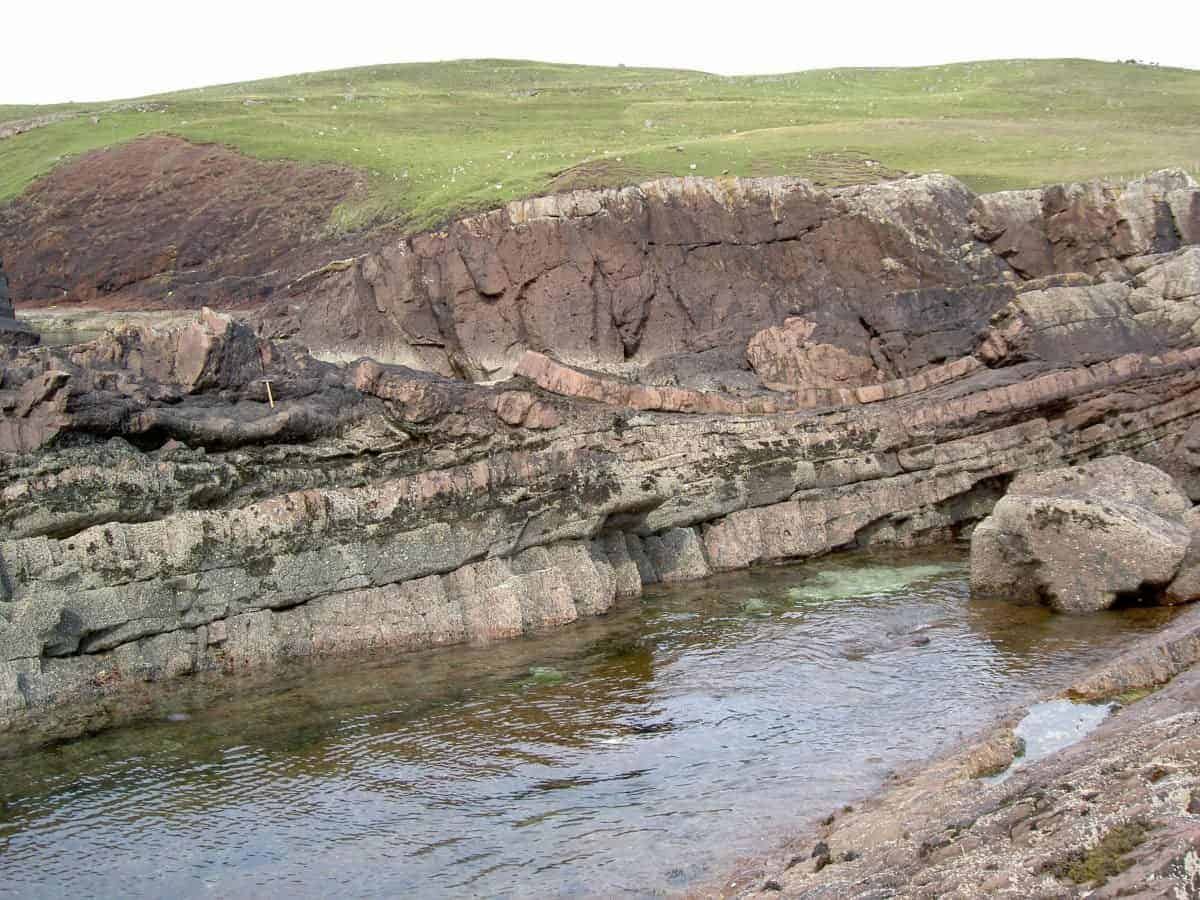
credit;SWNS
Britain’s biggest meteorite crater, spanning 25 miles, has been unearthed off the coast of north west Scotland.
It was caused by a 13 billion ton space rock that crashed near the present-day town of Ullapool – 1.2 billion years ago.
Measuring about 1km (0.62) across, it was travelling at more than 40,000 mph. It struck the Earth with the force of 940 million Hiroshima bombs.
This left a 25 mile wide crater beneath the North Atlantic that has lay hidden – until now.
Scientists first discovered evidence of the ancient strike eleven years ago. They have finally pinpointed its precise location.
It lies under the Minch, the rough sea that separates Lewis in the Outer Hebrides from the far Highlands of Scotland.
Between 15 and 20km (9.3 to 12.4 miles) west of a remote part of the beach, it is buried beneath both the water and younger rocks.
Lead author Dr Ken Amor, an earth scientist at the University of Oxford, said: “The material excavated during a giant meteorite impact is rarely preserved on Earth, because it is rapidly eroded, so this is a really exciting discovery.
“It was purely by chance this one landed in an ancient rift valley where fresh sediment quickly covered the debris to preserve it.
“The next step will be a detailed geophysical survey in our target area of the Minch Basin.”
Working with colleagues at the University of Aberdeen, he first found debris believed to have been flung out in the collision in 2008.
The thickness and extent of the deposit suggested it was near the coast – but the exact site remained a mystery.
If humans had been around then they would have seen quite a show. It would have melted rocks and thrown up an enormous cloud of vapour.
This scattered material over a large part of the region around Ullapool. The crater was rapidly buried by sandstone which helped to preserve the evidence.
So the researchers plotted the spot by mapping the direction the meteorite material took at several locations.
The study published in the Journal of the Geological Society was based on field observations, the distribution of broken rock fragments and the alignment of magnetic particles.
Unusual rock formations in the area were previously thought to have been formed by volcanic activity.
But Dr Amor and colleagues found evidence of a phenomenon known by geologists as “ejecta blanket”.
This represents debris thrown out when a huge object slams into the ground. The material from the meteorite strike is scattered over an area about 50km (31 miles) across.
In the rocks, there were also elevated levels of the element iridium, which is characteristic of extra-terrestrial material. There were also microscopic parallel fractures that also imply a meteorite strike.
Dr Amor said: “It would have been quite a spectacle when this large meteorite struck a barren landscape, spreading dust and rock debris over a wide area.”
At the time, most life was still in the oceans and there were no plants on the land. Scotland would have been quite close to the equator and in a semi-arid environment.
The landscape would have looked a bit like Mars when it had water at the surface. Earth and other planets may have suffered a higher rate of meteorite impacts.
In the distant past, they collided with debris left over from the formation of the early solar system.
However, there is a possibility a similar event will happen in the future given the number of asteroid and comet fragments floating around in the solar system.
It is thought collisions with an object this size occur between once every 100,000 years to once every one million years – but estimates vary.
One of the reasons for this is our terrestrial record of large impacts is poorly known because craters are obliterated by erosion, burial and plate tectonics.
Much smaller impacts, where the meteorite is only a few meters across are thought to be relatively common – perhaps happening about once every 25 years on average.
The largest crater made by a meteor or comet was discovered in the Australian outback four years ago.
It has a 250-mile diameter and is believed to have occurred more than 300 million years ago.
Other craters include the 100 mile wide Vredefort Dome in South Africa created over 2,000 million years ago and the 93 mile wide Chicxulub buried beneath Mexico’s Yucatan Peninsula – the most famous of them all.
It was created by an asteroid 66 million years ago – and is believed to have been responsible for wiping out the dinosaurs.